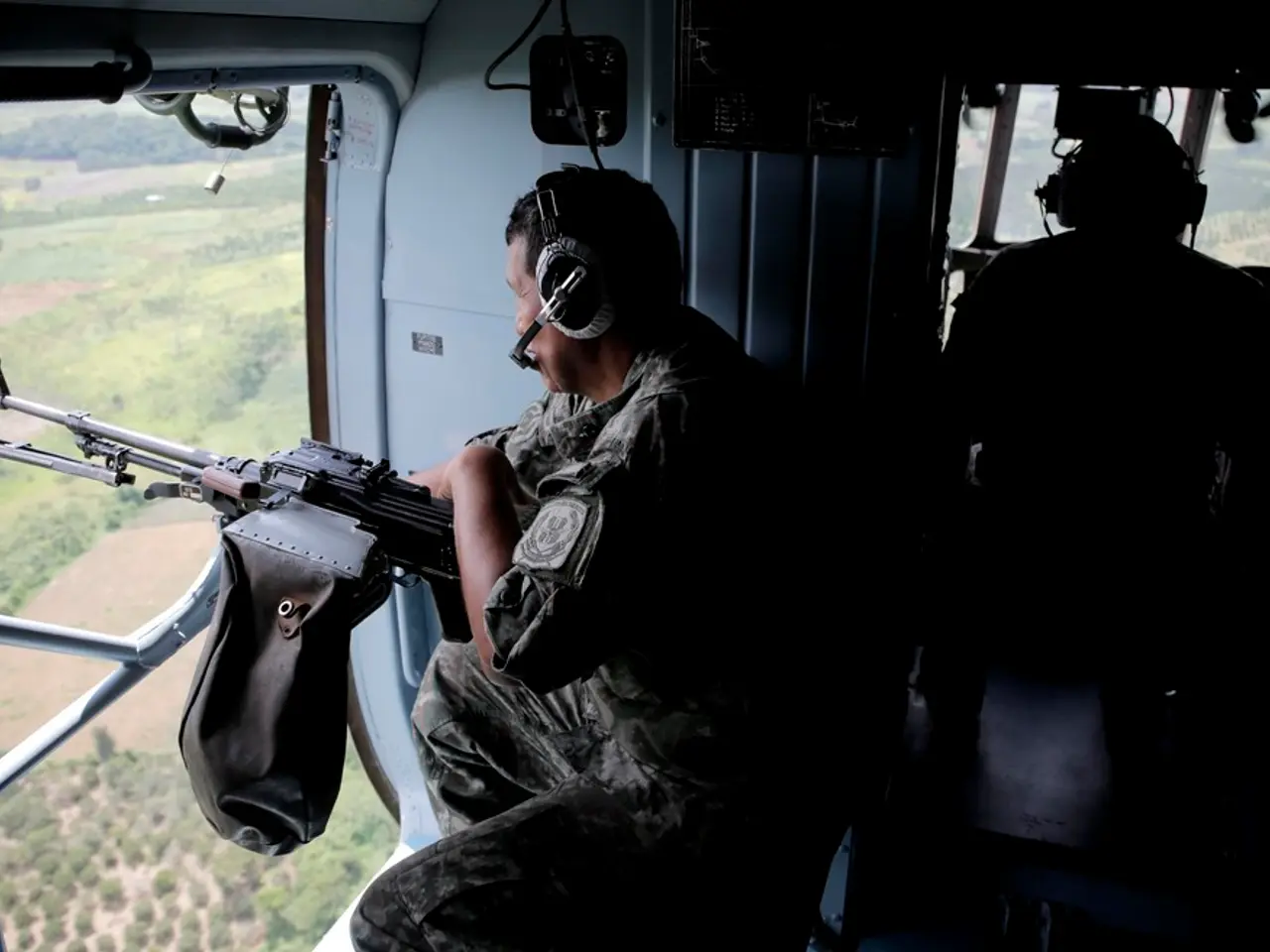Military Powerhouse: The Indomitable Tactical Warplane - F-15 Eagle
The F-15 Eagle, a military aircraft that has served actively for over 46 years, has undergone numerous significant upgrades and revisions since its introduction, transforming it from a pure air superiority fighter into a versatile and technologically advanced platform.
Originally designed for air superiority in the 1970s, the F-15 Eagle boasted exceptional speed (Mach 2.5) and maneuverability. However, its uses expanded over time, and the aircraft has since been employed in various roles, including interception, air superiority, tactical air-to-air fights, and tactical bombing.
A major variant, the F-15E Strike Eagle, was introduced as a two-seat, dual-role fighter, adding long-range, high-speed interdiction and ground-attack capabilities. This variant incorporated advanced precision-guided munitions and sophisticated navigation systems while maintaining excellent air-to-air combat performance.
Over time, the F-15 received numerous upgrades to its radar systems, improving detection, targeting, and electronic warfare abilities. Modernization programs also incorporated improved electronic warfare suites and expanded weapons compatibility, enabling the F-15 to handle a broader array of advanced weapon systems.
The latest major upgrade, the F-15EX Eagle II, introduces fly-by-wire flight controls for better maneuverability and flight safety. It features new weapons stations, allowing it to carry more and varied armaments. Equipped with an advanced electronic warfare suite and enhanced radar and computer systems, the F-15EX offers superior situational awareness and defense. Conformal fuel tanks extend range without sacrificing weapon load, and a strengthened airframe ensures increased durability and operational lifespan.
The F-15EX retains the Mach 2.5 top speed and shares about 70% of its parts with earlier F-15C and F-15E models, simplifying logistics and training. Designed for rapid technology insertion, the F-15EX aims to maintain relevance for decades. Current plans include procuring 129 aircraft to replace older F-15C/D and F-15E models and enhance force capability globally.
To date, a total of 1198 units of F-15s have been built, with over 400 still in use in the USAF. The F-15 Eagle has destroyed a total of 104 enemy fighters, while having zero loss. The aircraft is one of the most powerful and deadly tactical military aircrafts, and it is used by six countries in addition to the United States: Israel, Japan, Saudi Arabia, South Korea, and unspecified other countries.
The manufacturing of the F-15s continues under Boeing, and the aircraft was developed to meet the requirements of the USAF during the Vietnam War. The F-15 was the first user of Israel after the U.S., and the F-15E and F-15EX, the latest versions of the aircraft, are primarily used for the same roles as the original F-15: interception, air superiority, tactical air-to-air fights, and tactical bombing.
The F-15 remains one of the most developed and superior aircrafts in the world today, thanks to ongoing development and upgrade processes. It is expected to remain in service for the following decades. The United States plans to order new F-15 fleets in the following years, ensuring the continued relevance of this iconic aircraft in modern aerial combat.
[1] [News Article 1] [2] [News Article 2] [4] [News Article 4]
The F-15 Eagle, a highly advanced military aircraft, has also been utilized in various roles within the aerospace industry, such as interception and tactical air-to-air fights, due to its exceptional speed and maneuverability. The F-15EX Eagle II, the latest major upgrade, not only maintains its original speed but also includes enhancements in electronics, radar, and navigation systems, making it a valuable asset in the finance sector, given its improved situational awareness and defense capabilities.








